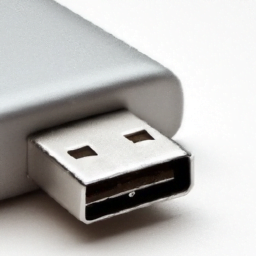



So you’re curious about the ports and connectivity options available in mini PCs? Well, let’s dive into it! Mini PCs, despite their compact size, boast a range of ports that cater to your diverse needs. From USB ports for connecting peripherals to HDMI ports for displaying high-definition content on your monitor or TV, these little powerhouses have got you covered. You’ll also find audio jacks for headphones or speakers, Ethernet ports for wired internet connections, and even Bluetooth and Wi-Fi capabilities for seamless wireless connectivity. With mini PCs, you won’t have to compromise on functionality just because of their size – they’re designed to keep you connected in all the ways you need.
USB Ports on Mini PCs
USB 2.0, 3.0 and 3.1 Gen
When it comes to USB ports, mini PCs offer a variety of options to cater to different needs. The most commonly found USB ports on mini PCs include USB 2.0, USB 3.0, and USB 3.1 Gen. USB 2.0 ports, which are the oldest of the three, provide data transfer speeds of up to 480 Mbps. These ports are suitable for connecting peripherals such as keyboards, mice, and printers. USB 3.0 ports, on the other hand, offer significantly faster data transfer speeds of up to 5 Gbps, making them ideal for external hard drives, flash drives, and other high-speed devices. The latest addition, USB 3.1 Gen, takes the speed even further with transfer rates of up to 10 Gbps, enabling faster backups and file transfers.
USB Type-C and Thunderbolt 3
With the increasing demand for thinner and more versatile devices, USB Type-C ports have become a standard feature on mini PCs. USB Type-C is a universal port that offers data transfer, power delivery, and display connectivity capabilities in a single connector. This means you can use one USB Type-C port to connect multiple peripherals, charge your device, and even connect to external monitors. Furthermore, if your mini PC supports Thunderbolt 3 technology, you can take advantage of even higher data transfer speeds, up to 40 Gbps, and connect to multiple high-resolution displays.
USB port functionality and use cases
USB ports on mini PCs serve a range of purposes, from connecting external storage devices and peripherals to charging smartphones and tablets. The versatility of USB ports allows users to expand the capabilities of their mini PCs and make them more tailored to their specific needs. For example, with USB 3.0 or 3.1 Gen ports, you can easily transfer large files from an external hard drive, or connect a high-performance gaming mouse for a seamless gaming experience. USB Type-C ports, with their multiple functionalities, can be used to connect to a docking station, providing a desktop-like experience with multiple monitors, keyboard, and mouse. The possibilities are endless when it comes to the use cases of USB ports on mini PCs.
Display Outputs on Mini PCs
HDMI ports
Mini PCs often come equipped with HDMI ports, which are a reliable and widely supported video output option. HDMI ports allow you to connect your mini PC to a wide range of external displays, including TVs, monitors, and projectors. HDMI supports high-definition audio and video signals, making it ideal for multimedia purposes. Whether you’re streaming movies, playing games, or giving presentations, an HDMI port ensures a seamless and high-quality display output.
DisplayPort outputs
Another popular display output option found on mini PCs is DisplayPort. DisplayPort provides high-resolution video and audio output and offers superior flexibility and performance. Mini PCs with DisplayPort outputs can support multiple monitors, and some even allow for daisy-chaining, enabling the connection of multiple displays in a series. DisplayPort is commonly used in professional settings, such as graphic design, video editing, and gaming, where the need for accurate color reproduction and high refresh rates is paramount.
VGA ports
While VGA ports are gradually becoming less common on mini PCs, they still exist in some models, especially those targeting older displays and projectors. VGA (Video Graphics Array) is an analog video connection that supports lower resolutions compared to HDMI and DisplayPort. VGA ports may be useful for connecting to legacy displays or in situations where HDMI or DisplayPort options are not available.
DVI Ports
DVI (Digital Visual Interface) ports, similar to VGA, are also becoming less prevalent on modern mini PCs. DVI offers digital video output but does not support audio signals. DVI ports can support high-resolution displays and are suitable for connecting to older monitors or projectors that lack HDMI or DisplayPort compatibility. However, with the rise of HDMI and DisplayPort, the need for DVI ports has diminished.
Display output use cases and compatibility with monitors
The display outputs on mini PCs serve various use cases, depending on the specific needs of the user. HDMI ports are the most versatile and widely compatible option, making them suitable for everyday use. Whether you’re watching movies, playing games, or working on multimedia projects, an HDMI port will deliver excellent results on most modern displays. DisplayPort outputs, on the other hand, cater more to professional users who require high-resolution and color-accurate displays. Designers, video editors, and gamers benefit from the advanced capabilities of DisplayPort, especially when working with multiple monitors. While VGA and DVI ports may not be as commonly used anymore, they still provide alternative connectivity options for specific situations, such as connecting to older displays or legacy equipment.
Ethernet Connectivity on Mini PCs
RJ45 Connector
Mini PCs often come with an RJ45 connector, which allows for Ethernet connectivity. The RJ45 connector is the standard interface for connecting to wired networks. It offers a stable and reliable connection for accessing the internet, file sharing, and other network-related activities. The RJ45 connector is compatible with various Ethernet cable types, such as Category 5e (Cat5e) and Category 6 (Cat6), ensuring high-speed data transfer and low latency.
100Mbps, 1Gbps and 10Gbps Ethernet
Ethernet connectivity on mini PCs can support different speeds, depending on the network infrastructure and the capabilities of the mini PC itself. Common Ethernet speeds include 100Mbps, 1Gbps (Gigabit), and 10Gbps (10 Gigabit). The speed of the Ethernet connection determines the rate at which data can be transferred over the network. For most everyday usage, such as web browsing, online streaming, and file sharing, a 1Gbps Ethernet connection is more than sufficient. However, in scenarios that demand extremely high-speed data transfer, such as content creation or large-scale data processing, 10Gbps Ethernet provides the necessary bandwidth.
Use cases of Ethernet connectivity
Ethernet connectivity on mini PCs opens up a world of possibilities for users. With a stable and fast wired connection, you can enjoy lag-free online gaming, stream high-definition content without interruption, and perform data-intensive tasks with ease. Ethernet connectivity is particularly valuable in environments where Wi-Fi signals may be weak or unreliable, such as crowded office spaces or homes with thick walls. It also ensures secure and private connections, making it suitable for businesses and professionals who prioritize network stability and security.
Wireless Connectivity on Mini PCs
Wi-Fi standards and speeds
In addition to wired Ethernet connections, mini PCs also offer wireless connectivity options to cater to the increasing demand for mobility and convenience. Wi-Fi capability allows you to connect to wireless networks, giving you the freedom to access the internet and network resources without the need for physical cables. Mini PCs support different Wi-Fi standards, including 802.11n, 802.11ac, and the newer Wi-Fi 6 (802.11ax). These standards determine the speed, range, and overall performance of the wireless connection. While 802.11n provides decent speeds for everyday use, 802.11ac and Wi-Fi 6 offer significantly faster data transfer rates and improved reliability, especially in congested areas.
Bluetooth & its various versions
Bluetooth technology is another wireless connectivity option available on mini PCs. Bluetooth allows for short-range communication between devices, such as connecting wireless keyboards, mice, speakers, and headphones. Mini PCs support different versions of Bluetooth, with each version offering enhancements in terms of speed, range, and power consumption. The most common Bluetooth versions found on mini PCs are Bluetooth 4.0, Bluetooth 5.0, and the latest Bluetooth 5.2, which provides faster speeds and improved audio quality.
Wi-Fi and Bluetooth use cases
Wireless connectivity options on mini PCs provide great flexibility and convenience. Wi-Fi enables you to connect to the internet and access network resources from anywhere within the coverage area. This is particularly useful when you need to work in different locations or when a wired connection is not available. Bluetooth connectivity, on the other hand, simplifies the process of connecting peripheral devices without the hassle of cables. You can easily pair your mini PC with wireless keyboards, mice, speakers, and other Bluetooth-enabled devices, reducing cable clutter and increasing mobility. Whether you’re browsing the web, streaming content, or working on the go, wireless connectivity options greatly enhance the user experience on mini PCs.
Audio Ports on Mini PCs
3.5mm Audio Jack
Audio ports on mini PCs typically include a 3.5mm audio jack, which allows you to connect headphones, speakers, and other audio devices. The 3.5mm audio jack is a standard audio connector found in most consumer electronics. It offers stereo output and supports analog audio signals. This versatile port enables high-quality audio playback and is suitable for a range of use cases, from enjoying music and movies to video conferencing and gaming.
Optical Audio Output
Some mini PCs may also feature an optical audio output, also known as TOSLINK or S/PDIF (Sony/Philips Digital Interface) port. This port allows for the transmission of high-fidelity digital audio signals to compatible audio devices, such as home theater systems and soundbars. Optical audio output ensures a clean and interference-free audio signal, making it perfect for audiophiles and those seeking enhanced audio quality.
Audio port use cases
Audio ports on mini PCs serve various purposes, depending on the user’s audio needs and preferences. The 3.5mm audio jack is commonly used for personal audio enjoyment, allowing you to connect headphones or speakers for a more immersive audio experience. It is also useful for audio input, allowing you to connect a microphone for voice recording or video conferencing. The optical audio output, on the other hand, caters to those who prioritize high-quality audio output. It provides a digital connection for connecting to audio systems, ensuring pristine audio reproduction for movies, music, and other media. Mini PCs with audio ports offer versatile audio options, enabling you to tailor your audio setup to your specific requirements.
Memory Card Slots on Mini PCs
SD Card slot
Mini PCs often feature an SD card slot, which allows you to expand the storage capacity or easily transfer files from cameras, smartphones, and other devices. SD (Secure Digital) cards are a popular type of memory card used in a wide range of portable electronic devices. The SD card slot provides a convenient way to read and write data on these memory cards without the need for external card readers or adapters. It is particularly useful for photographers, videographers, and content creators who need to transfer files quickly and efficiently.
MicroSD Card slot
In addition to SD card slots, some mini PCs also include a microSD card slot, which supports the smaller variant of SD cards. MicroSD cards are commonly used in smartphones, tablets, and action cameras. Having a microSD card slot on a mini PC allows for easy data transfer between these devices and the mini PC itself. You can access files stored on microSD cards directly or transfer them to the internal storage of the mini PC for further processing or editing.
Memory card slot use cases
Memory card slots on mini PCs serve as a convenient method for expanding storage or accessing data from portable devices. With an SD card or microSD card slot, you can easily back up important files, transfer media files, or expand the storage capacity of your mini PC. Photographers and videographers can directly import their files from SD or microSD cards to the mini PC for editing, eliminating the need for additional adapters or cables. Additionally, memory card slots provide a quick and efficient way to share files between devices without relying on cloud storage or external drives.
Peripheral Connection Ports on Mini PCs
PS/2 connector for older peripherals
While most modern peripherals use USB connectivity, some mini PCs may still include a PS/2 connector for compatibility with older keyboards and mice. PS/2 ports were the standard for connecting keyboards and mice before USB became prevalent. These ports are gradually being phased out, but they can still be found on certain mini PCs for those who need to use legacy devices.
Serial and Parallel Ports for industrial use
In specific use cases, particularly in industrial environments, mini PCs may include serial and parallel ports. Serial ports provide serial communication for connecting devices such as barcode scanners, printers, and industrial equipment. Parallel ports, on the other hand, offer parallel communication and are often used for connecting older printers, scanners, and CNC machines. These ports cater to industries that rely on legacy equipment and require precise control and communication with specialized devices.
Peripheral port use cases
Peripheral connection ports on mini PCs ensure compatibility and connectivity with a wide range of devices. While most users will opt for USB connectivity for their peripherals, having additional options such as PS/2, serial, and parallel ports accommodates various scenarios. PS/2 connectors allow users to connect older keyboards and mice that still hold sentimental value or specific functionality. Serial and parallel ports, although less commonly used nowadays, provide essential connectivity for industries that rely on legacy devices. Mini PCs with peripheral connection ports offer a comprehensive solution for users with diverse peripheral requirements.
Power Supply Connector on Mini PCs
AC Adapter Port
The AC adapter port is where you connect the power supply to your mini PC. This port provides the necessary power for the device to operate. Most mini PCs use external AC adapters, which convert the AC power from outlets into the appropriate DC voltage required by the mini PC. AC adapter ports are typically standardized across mini PCs, ensuring compatibility with various power supplies. The use of AC adapters allows for easy replacement or upgrade of power supplies if needed.
DC power jack
In some cases, mini PCs may utilize a DC power jack instead of an AC adapter port. The DC power jack is a connector that directly accepts the DC power input, without the need for an external adapter. This type of power connection is commonly found in mini PCs with embedded systems or where space constraints limit the use of external adapters. DC power jacks require careful handling to ensure the correct polarity and voltage are applied to avoid damaging the mini PC.
Power supply connector use cases
The power supply connector on mini PCs ensures reliable and continuous power delivery to the device. Whether it’s an AC adapter port or a DC power jack, the goal is to provide the necessary power for the mini PC to operate flawlessly. The use of standardized power supply connectors ensures compatibility and ease of replacement or upgrade if necessary. The choice between AC adapter ports and DC power jacks is often determined by the design and intended purpose of the mini PC. Both options fulfill their role in delivering power and enabling the device to function smoothly.
Internal Connectivity Options on Mini PCs
PCI Express Mini
Mini PCs often feature a PCI Express Mini slot, which allows for expansion and customization of internal components. PCI Express Mini is a compact form factor that enables the integration of additional functionalities into mini PCs. The slot can accommodate add-in cards such as wireless network adapters, solid-state drives (SSDs), and other specialized expansion cards. PCI Express Mini provides users with the flexibility to tailor their mini PCs to their specific needs and upgrade certain components when necessary.
mSATA connector
Another internal connectivity option found on some mini PCs is the mSATA connector. mSATA (mini Serial Advanced Technology Attachment) is a small form factor connector primarily used for connecting solid-state drives (SSDs). mSATA connectors are efficient in terms of space utilization and allow for faster data transfer speeds compared to traditional hard disk drives (HDDs). Mini PCs with mSATA connectors offer improved storage performance for faster system boot times, application launches, and overall system responsiveness.
Internal connectivity use cases
Internal connectivity options on mini PCs offer users the ability to expand and upgrade their devices according to their specific requirements. Whether it’s adding a wireless network adapter for enhanced connectivity, upgrading to a faster SSD using the mSATA connector, or integrating specialized expansion cards for specific industrial applications, internal connectivity options provide tremendous flexibility. Mini PCs with these expansion slots cater to users who value customization and the ability to future-proof their devices.
Evolution and Future of Mini PC Ports
Trends in decrease of port types and increase in multipurpose ports
Over time, there has been a noticeable trend in mini PCs towards decreasing the number of individual ports and increasing the use of multipurpose ports. This trend is driven by the need for more versatile and compact devices. By consolidating functionalities into multipurpose ports such as USB Type-C, mini PCs can offer a smaller form factor while still providing a wide range of connectivity options. This consolidation also simplifies cable management and reduces the number of adapters or dongles required for different connections.
Rise of wireless and cloud connectivity
The rise of wireless and cloud connectivity has also influenced the evolution of mini PC ports. With the increasing availability and reliability of wireless networks, the need for physical connections is decreasing. Wi-Fi and Bluetooth technologies provide seamless wireless connectivity for internet access, peripheral connections, and file sharing. Cloud storage and services further diminish the reliance on local storage and physical ports, allowing for remote access and collaborative work. As wireless and cloud connectivity capabilities continue to improve, the emphasis on physical ports may continue to diminish.
Potential future developments in mini PC ports and connectivity
Looking forward, mini PCs may see further developments in ports and connectivity to keep up with evolving technologies and user demands. One potential development is the adoption of USB4, which offers even faster data transfer speeds and enhanced capabilities for video and power delivery. The integration of Thunderbolt 4, which combines Thunderbolt with USB4, could further enhance the versatility of USB Type-C ports. Additionally, advancements in wireless technologies such as Wi-Fi 6E and Bluetooth 5.2 may pave the way for higher data transfer speeds, improved range, and reduced latency. As mini PCs become more compact and portable, the focus will likely shift towards wireless, cloud-based, and artificial intelligence-driven connectivity options to cater to the needs of the modern user.
In conclusion, mini PCs offer a wide range of ports and connectivity options to meet the diverse needs of users. From the versatile USB ports to the various display outputs, Ethernet and wireless connectivity options, audio ports, memory card slots, peripheral connection ports, power supply connectors, and internal connectivity options, mini PCs provide the necessary tools for productivity, entertainment, and customization. As technology continues to evolve, the mini PC landscape will adapt to these changes, providing users with even more efficient, compact, and connected solutions.
Disclosure: As an Amazon Associate, I earn from qualifying purchases.







